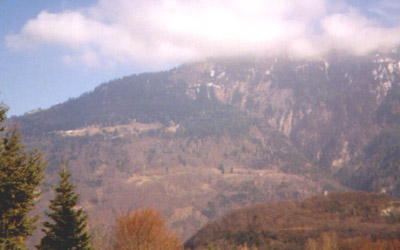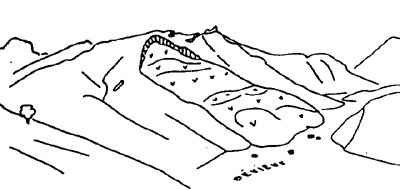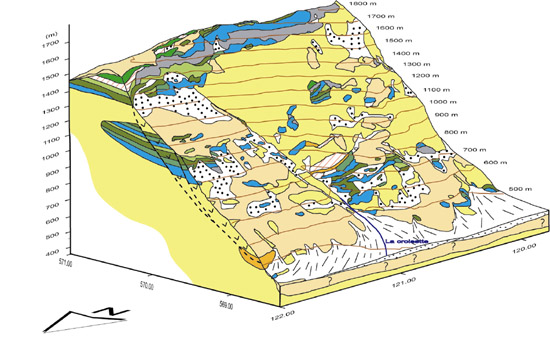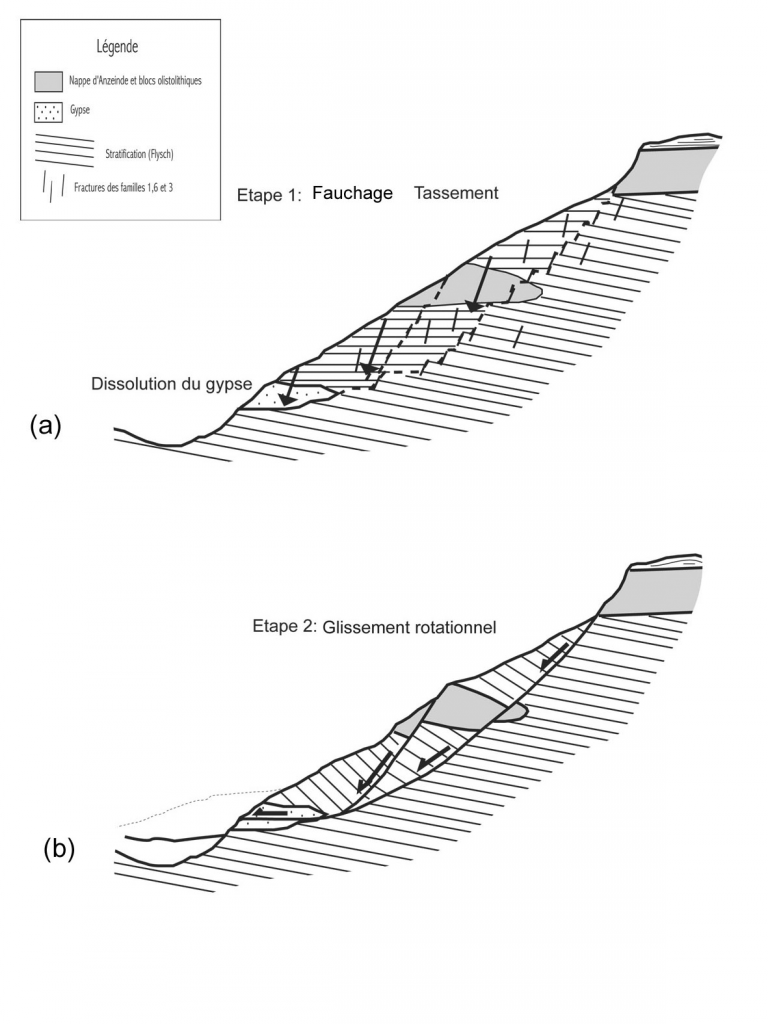The sagging mass of les Monts-sur-Bex
The ancient landslide of les Monts-sur-Bex is one of the biggest in Switzerland (Figs. 1). Its width is more than 1500 m, and at its base, its thickness can reach 200 m (Kauffmann, 2002).


Fig. 1: Picture of les Monts-sur-Bex landslide and illustration of the moved mass (from Burri, 1985).
The landslide is located mostly in flyschs, which are underlying Triassic gypsums and anhydrites (Fig. 2). The principal factor of destabilization of the slope is the dissolution of gypsum. The preexisting rock fracturing promoted the creation of sliding surfaces. In a first step stratification and discontinuities increased the toppling processes, finally leading to a basal sliding surface (Fig. 3).

Fig. 2 : Block diagram showing the expected sliding surface and the complex geology. Observe at the base the gypsum (orange). The yellow corresponds to the flyschs and the blue green to carbonate series. The dotted area represents recent scree. (From Kauffmann, 2002).
Fig. 3 : Assumed processes of landslide formation (from Kauffmann, 2002).
References:
Burri, M. (1985): Géologie générale. Instituts romands des Sciences de la Terre.
Kauffmann, J.F. (2002): Etude du tassement des Monts de Bex par géophysique et analyse de la fracturation. Dipl. Univ. Lausanne. Inédit.

